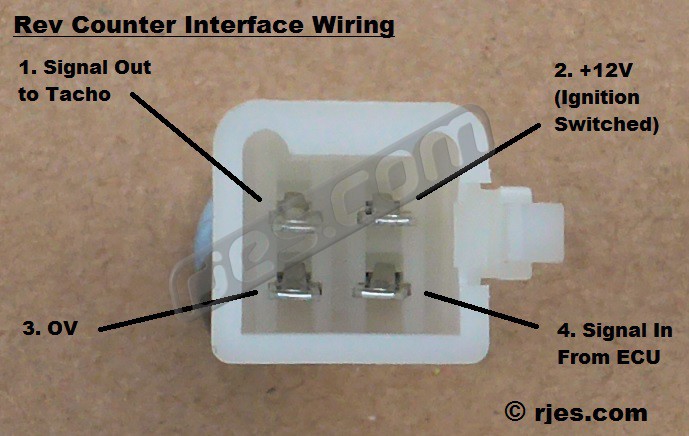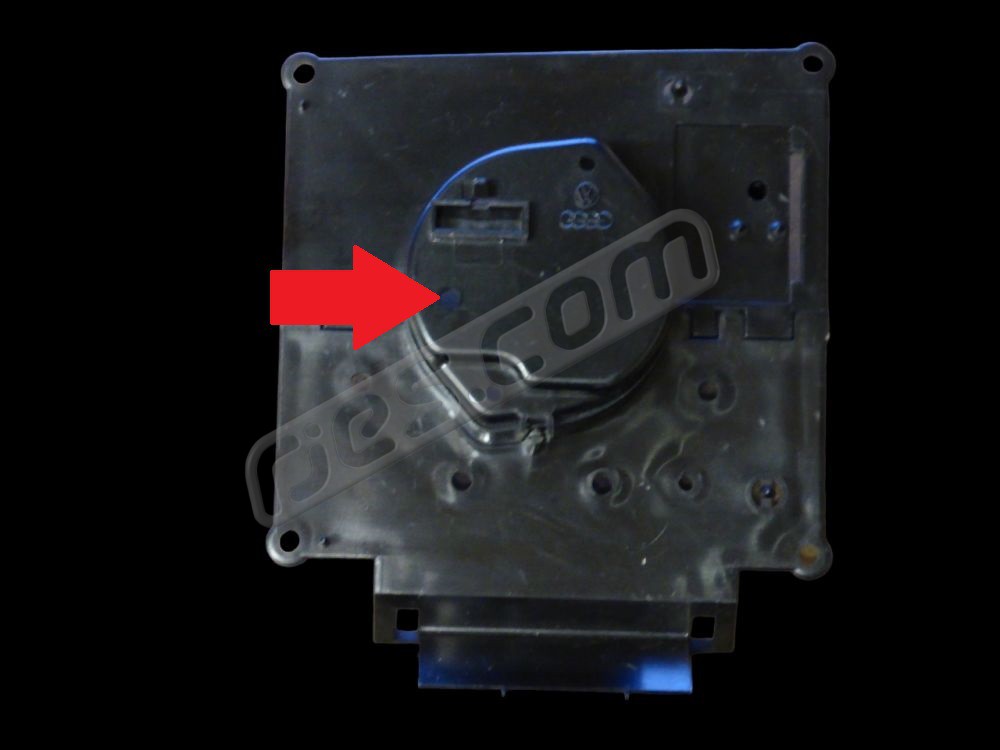The signal provided by Subaru ECU’s and VW’s inline engine management ECU’s (i.e. not the VW inline models with carburetor, mechanical diesel pumps or separate ignition and fuel injection) will not drive old rev counters which were designed to be connected directly to the coil negative terminal on petrol engines. This includes the standard rev counters fitted to rear engined petrol VW’s, many Porsches, and many others. This module converts the signal into what the petrol rev counters in rear engined VW’s expect, and was designed specifically for the petrol T25 / T3 / Vanagon rev counters. This enables your standard rev counter to work without any modification. In the T25 / T3 / Vanagon this is a big advantage over old methods which involve disturbing the dreaded flexible blue circuit boards so the dash instruments can dismantled and the circuit inside can be modified.
This module is not suitable for diesel rev counters intended to be driven by the alternator or modern rev counters which connect directly to a dedicated output from the ECU – in fact it could damage any rev counters not designed to be connected to a coil negative terminal, such as older diesel designs which are only designed to be connected to the alternator (such as the VW diesel T25 / T3 / Vanagon models)
Suitable rev counters include the OEM ones by VDO as used VW T25/ T3 / Vanagon, Golf, Porsche 944, 914, etc. which will not work from a 12V square wave.
This module will probably allow all rev counters intended to be connected directly to the coil negative terminal of petrol engines (VDO, Autometer, Smiths, TIM, etc, OEM or aftermarket) to be driven by the dedicated output of most modern ECUs. However, it has only been tested with the above applications. If attempting to use it for anything other than these applications causes damage to your rev counter, ECU or anything else, that is the customers risk and responsibility. It may also work with other combinations of modern ECU / old rev counter, but these are untested. Again, experiment with these at your own risk.

| Wire Colour: | Wire Function: |
| Red | Ignition switched, fused +12V supply |
| Black | Earth / Ground / 0V |
| Yellow | Signal In – to ECU Tacho Signal Output (‘Tacho from ECU’ wire on RJES harnesses) |
| Orange | Signal Output – to Rev Counter Input (green wire on T25 / T3 / Vanagon) |
It is not practical to include a description of how to identify the ECU tacho output wire on Subaru ECU’s as neither the wire colour or terminal number is consistent from year to year or model to model. For example, there are at least 8 different ECU connector designs, 4 different wire colours and multiple terminal function variations within most of the connector designs, and that’s just within the European model Subarus from 1990 – 2008.
If your VW originally had a rev counter, we did your engine management wiring work and you ordered the rev counter interface at the same time along with the option to have all new VW connectors fitted to your Subaru engine management harness, your rev counter interface will be ‘plug an play’ – no wiring needed.
If we did your engine management wiring work but you did not order the rev counter interface at the same time, the signal wire from the ECU will be identified with a label marked ‘tacho from ECU’. This will be found in one of the following locations:
- T25/T3/Vanagon, if you didn’t specify the front extension harness option – in the black engine bay junction box where the Subaru harness plugs in to the VW chassis harness
- T25/T3/Vanagon, if you did specify the front extension harness option, for a VW without a rev counter – the black wire coming from the front extension harness in the dashboard
- Aircooled VW, if you didn’t specify the front extension harness option – near the ECU, where the VSS wires, etc branch out (air cooled VW)
- Aircooled VW, if you did specify the front extension harness option – the black wire coming from the front extension harness in the dashboard
If someone else did your engine management wiring work, then they determine how to identify the signal wire.
Rev Counter Calibration:

No calibration is needed when the number of cylinders that the engine has matches what the rev counter was designed for. If the number of cylinders does not match, the rev counter will need recalibrating. Calibration has nothing to do with this module – the calibration is built in to the rev counter. With some designs such as the T25 / T3 / Vanagon, it is very easy because the calibration potentiometer is easily accessible:
With other designs such as many Porsche rev counters, recalibration is very difficult because the calibration potentiometer is not accessible at all without removing the casing, which means removing the swaged on bezel (front ring) *.
*We have the equipment to remove and refit the bezel / front rings to Porsche 80, 100 and 115mm instruments to a near flawless standard, and can refurbish them (re-plate casing, re-paint or replace the bezel / front rings, and replace or refurbish the glass or plastic).
Calibration is not easy if you do not have an accurate way to measure engine speed. Analogue electronic rev counters, even when from good makes such as VDO, are not precision instruments. They have a noticeable amount of hysteresis, so to find the optimum calibration setting, you have to calibrate them for increasing and decreasing revs, then pick the setting half way between the two. It’s much easier to do ‘on the bench’ than in a vehicle. If the calibration adjuster is easily accessible, or if it’s a Porsche gauge which we’re refurbishing for you, we can recalibrate the rev counter for mismatched numbers of cylinders. If it is a rev counter which we are not familiar with, we’ll also require the relevant info on how it is wired.
